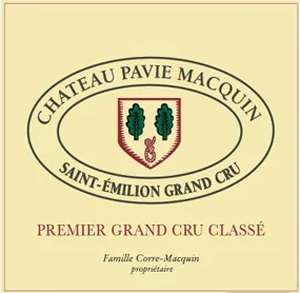| Region | |
|---|---|
| Subregion | France > Bordeaux > Right Bank > St Emilion |
| Colour | Red |
| Type | Still |

This is always an extremely masculine, dense, burly wine, and the 2010, which tips the scales at 14.5% alcohol (just slightly under that of the 2009), has a final blend of 80% Merlot and the rest virtually all Cabernet Franc, with just 1% Cabernet Sauvignon. Loads of crushed rock and chalkiness, along with licorice, black truffle, smoked game and black fruits dominate the aromatics and flavor. Backward, formidably endowed, full-bodied and almost atypically massive and huge, with gargantuan extraction, this is a wine for patient connoisseurs to forget about for close to a decade. Anticipated maturity: 2022-2040+.
Gorgeous nose with great complexity. Blackberry, licorice and a steely mineral note. Lots of chalk, nutmeg and violets too. Dense and full-bodied on the palate with a beautiful fruit and a sumptuous fruity finish that just goes on and on. Velvety tannins and layered texture with lots of raw licorice. Drink from 2018.
This is always an extremely masculine, dense, burly wine, and the 2010, which tips the scales at 14.5% alcohol (just slightly under that of the 2009), has a final blend of 80% Merlot and the rest virtually all Cabernet Franc, with just 1% Cabernet Sauvignon. Loads of crushed rock and chalkiness, along with licorice, black truffle, smoked game and black fruits dominate the aromatics and flavor. Backward, formidably endowed, full-bodied and almost atypically massive and huge, with gargantuan extraction, this is a wine for patient connoisseurs to forget about for close to a decade. Anticipated maturity: 2022-2040+.
Love the nuances straight off the bat with this wine, it's a nose that you want to take your time with, slowing everything down. Blackberry and cassis fruits, tannnins brooding but velvety, holds its core strength with confidence. This is 12 years old but just revving up out of the starting block. Delicious, reserved but luscious black chocolate and liqourice bud, nothing too sweet, this is balanced and careful in its slate-filled pummice stone minerality. Has a deft lightness of touch that conceals its power. 80% new oak. Part of the warm vintages series within this vertical.
Dark crimson. Something a bit unusual about this. Certainly pure on the nose. And pretty ripe. Very sweet start and then very worked and polished. Chewy end. Oak a bit too much of a feature in this wine!
Rich, dense and powerful but extremely well balanced. Huge depth of fruit. Striking freshness. Bags of ripe tannin. Great ageing potential. Drink 2020-2040.
Although not as potent alcoholically as its 2009 counterpart (14.5% in 2010 versus 15% in 2009), the 2010 is still a very big wine. The final blend was 85% Merlot, 14% Cabernet Franc and 1% Cabernet Sauvignon and production was slightly more than 3,400 cases. This black/purple-tinged wine exhibits lots of minerality (from this terroir's clay and limestone soils) as well as the entire spectrum of black fruits. Full-bodied and backward, it's like drinking crushed limestone/chalk when you taste this intense, tannic, powerful wine. It will require 8-10 years of cellaring and should evolve for 35-40+ years.
Tasted at the Union de Grand Cru in London. The Pavie-Macquin has wonderful delineation and poise on the nose: raspberry, wild strawberry, crushed stone and a hint of apricot. It is quite modern in style - but wonderfully controlled and generous, almost to the point of Burgundian purity. The palate is medium-bodied with super-fine tannins. There are hints of sage and quince infusing the red fruit profile, whilst the finish is silky smooth. It is perhaps just a little sweeter than I envisaged out of barrel? Hopefully it will calm down in bottle. Tasted November 2012.
The Pavie Macquin has a gorgeous, lifted, opulent bouquet with pure dark berries, boysenberry and dark plums with superb delineation. Seductive indeed. The palate is medium-bodied with ripe, juicy tannins, layers of pure vanilla-tinged red fruits with a harmonious silky finish that retains freshness and vibrancy. This is yet another lovely Pavie-Macquin. Tasted April 2011.
Super compacted with incredible intensity of minerals, black fruits, licorice and spices. Full and dense. Wild fruit that goes on for minutes. A little firm as always but will open nicely